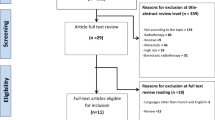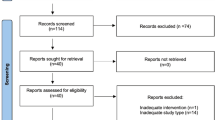Abstract
The purpose of this paper to identify the optimal therapy after radical prostatectomy (RP) for patients with adenocarcinoma of the prostate invading the seminal vesicles (pT3bN0M0 or SVI). A PubMed search using the keywords ‘prostate’, ‘seminal vesicle’, ‘prostatectomy’, ‘radiotherapy’, ‘androgen blockade’ was performed to identify literature regarding rates of disease failure in patients with SVI who are observed or treated with androgen blockade (AB), radiotherapy (RT) or RT+AB after RP. The outcome of 68 patients treated at Duke University with post-operative AB, RT or RT+AB for pT3bN0M0 is also presented. More than 70% of patients with SVI develop disease recurrence after surgery. For many, recurrence occurs within 2 y after RP. These patients have poor control rates with postoperative RT alone. While experience with AB and RT+AB is limited, control rates are generally superior to RT alone. At Duke University, after a median follow-up of nearly 4 y, patients treated with RT+AB or AB alone for pT3bN0M0 achieved better 5-y progression-free survival (PFS) compared with those who received RT alone (78 and 68 vs 30%, P=0.03 and 0.046, respectively). There was no PFS difference between those who received AB alone or RT+AB (68 vs 78%, P=0.5). Seminal vesicle invasion confers a poor prognosis after RP. SVI is a consistent predictor of poor outcome after RT. The limited data available examining AB and RT+AB in pT3bN0M0 disease, including data from Duke University, are encouraging. Nonetheless, postoperative AB, RT and RT+AB for pT3bN0M0 disease require prospective evaluation, as RP alone is rarely curative.
This is a preview of subscription content, access via your institution
Access options
Subscribe to this journal
Receive 4 print issues and online access
$259.00 per year
only $64.75 per issue
Buy this article
- Purchase on Springer Link
- Instant access to full article PDF
Prices may be subject to local taxes which are calculated during checkout
Similar content being viewed by others
References
Salomon L, Anastasiadas AG, Johnson CW . Seminal vesicle involvement after radical prostatectomy: predicting risk factors for progression. Urology 2003; 62: 304–309.
Freedland SJ, Aronson WJ, Presit J . Predictors of PSA progression among men with SVI at the time of RP. Cancer 2004; 100: 1633–1638.
Bloom KD, Richie JP, Schultz D . Invasion of the SV by ACP: PSA outcome determined by pre-operative and post-operative factors. Urology 2004; 63: 333–336.
Epstein JI, Partin AW, Potter SR . Adenocarcinoma of the prostate invading the seminal vesicle: prognostic stratification based on pathological parameters. Urology 2000; 56: 283–288.
Tefilli MV, Gheiler EL, Tiguert R . Prognostic indicators in patients with SVI following RP for clinically localized prostate cancer. J Urol 1998; 160: 802–806.
D’Amico AV, Whittington R, Malcowicz S . A multivariate analysis of clinical and pathological factors that predict for PSA failure after RP for prostate cancer. J Urol 1995; 154: 131–138.
Sofer M, Savoie M, Kim S . Biochemical and pathological predictors of the recurrence of prostatic adenocarcinoma with SVI. J Urol 2003; 169: 153–156.
Anscher MS, Prosnitz LR . Multivariate analysis of factors predicting local relapse after RP—possible indications for post-operative therapies. Int J Radiat Oncol Biol Phys 1991; 21: 941–947.
Kalapurakal JA et al. Biochemical disease free survival following adjuvant and salvage radiotherapy after radical prostatectomy. Int J Radiat Oncol Biol Phys 2002; 54: 1047–1054.
Schild SE et al. The results of radical retropubic prostatectomy and adjuvant therapy for pathological stage C prostate cancer. Int J Radiat Oncol Biol Phys 1996; 34: 535–541.
Shipley W et al. Salvage radiotherapy after RP for prostate adenocarcinoma: analysis of efficacy and prognostic factors. Urology 2002; 59: 726–731.
Anscher MS et al. Radiotherapy for a rising PSA after radical prostatectomy: the first 10 years. Int J Radiat Oncol Biol Phys 2000; 48: 369–375.
Taylor N et al. Adjuvant and salvage radiotherapy after radical prostatectomy for prostate cancer. Int J Radiat Oncol Biol Phys 2003; 56: 755–763.
Choo R et al. Positive resection margins and/or pathological T3 adenocarcinoma of the prostate with undetectable post-operative PSA after RP: to irradiate or not. Int J Radiat Oncol Biol Phys 2002; 52: 674–680.
Valicenti R et al. Pathological seminal vesicle invasion after RP for patients with prostate carcinoma. Cancer 1998; 82: 1909–1914.
Vicini F et al. Treatment outcome with adjuvant and salvage irradiation after RP for prostate cancer. Urology 1999; 54: 111–117.
Catton C et al. Adjuvant and salvage radiation therapy after RP for adenocarcinoma of the prostate. Radiother Oncol 2001; 59: 51–60.
Mayer R et al. Post-prostatectomy radiotherapy for high risk prostate cancer. Urology 2002; 59: 732–739.
Stephenson AJ, Shariat SF, Zelefsky MJ . Salvage radiotherapy for recurrent prostate cancer after RP. JAMA 2004; 291: 1325–1332.
Katz MS et al. Predictors of biochemical outcome with salvage conformal radiotherapy after radical prostatectomy for prostate cancer. J Clin Oncol 2003; 21: 483–489.
Eulau SM et al. Effect of combined transient androgen deprivation and irradiation following radical prostatectomy for prostatic cancer. Int J Radiat Oncol Biol Phys 1998; 41: 735–740.
Tiguert R et al. Neoadjuvant hormone therapy before salvage radiotherapy for an increasing post-radical prostatectomy serum prostate specific antigen level. J Urol 2003; 170: 447–450.
Zincke H et al. Role of early adjuvant hormonal therapy after radical prostatectomy for prostate cancer. J Urol 2001; 166: 2208–2215.
Pilepich MV et al. Phase III trial of androgen suppression using goserelin in unfavorable prognosis carcinoma of the prostate treated with definitive radiotherapy: report of RTOG Protocol 85-31. J Clin Oncol 1997; 15: 1013–1021.
Pilepich MV et al. Does androgen suppression enhance the efficacy of post-operative irradiation? A secondary analysis of RTOG 85-31. Urology 1999; 54: 495–502.
Cox DR et al. Regression models and life tables. J Roy Stat Soc Ser B 1972; 74: 187–220.
Moul J, Wu H, Sun L . Epidemiology of radical prostatectomy for localized prostate cancer in the era of prostate-specific antigen: an overview of the Department of Defense Center for Prostate Disease Research National Database. Surgery 2002; 132: 213–219.
Freedland S, Presti JC, Amling C . Time trends in biochemical recurrence after RP: results of the SEARCH Database: The Search Database Study Group. Urology 2003; 61: 736–741.
Jhaveri FM, Klein EA, Kupelian PA . Declining rates of extracapsular extension after radical prostatectomy: evidence for continued stage migration. J Clin Oncol 1999; 17: 3167–3172.
Pound CR, Partin AW, Eisenberger MA . Natural history of progression after PSA elevation following radical prostatectomy. JAMA 1999; 281: 1591–1642.
Messing EM et al. Immediate hormonal therapy compared with observation after radical prostatectomy and pelvic lymph node dissection in men with node positive prostate cancer. N Engl J Med 1999; 341: 1781–1788.
Bolla M et al. Improved survival in patients with locally advanced prostate cancer treated with radiotherapy and goserelin. N Engl J Med 1997; 337: 295–300.
Bolla M et al. Long-term results with immediate androgen suppression and external irradiation in patients with locally advanced prostate cancer (an EORTC Study): a phase III randomised study. Lancet 2002; 360: 103–106.
Author information
Authors and Affiliations
Corresponding author
Additional information
Financial support: None.
Rights and permissions
About this article
Cite this article
Kasibhatla, M., Peterson, B. & Anscher, M. What is the best postoperative treatment for patients with pT3bN0M0 adenocarcinoma of the prostate?. Prostate Cancer Prostatic Dis 8, 167–173 (2005). https://doi.org/10.1038/sj.pcan.4500789
Received:
Revised:
Accepted:
Published:
Issue Date:
DOI: https://doi.org/10.1038/sj.pcan.4500789



